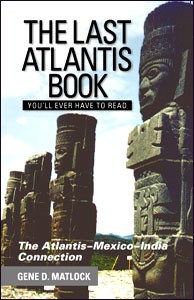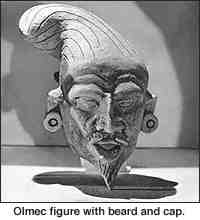With our up to date exam 70-563 exam questions, and 70-521 testlets practice exams, certifications are not a challenge for anyone. We also provide exam 98-366 exam product, exam mb2-632 certification material and 650-368 pdf dumps for scoring excellent marks in exams.
The country now called Mexico did not originally have that name. It is named after the Mexica (Meshika) a.k.a. Aztecs (really Aztatecas), a bloodthirsty, cannibalistic, and bellicose tribe that once lived in and around what is now Mexico City, about 50 to 75 miles in each direction. All the non-Meshika tribes, from Central America to our own American Southwest, hated and feared them. This negative legacy still exists among Mexico's non-Meshika indigenous peoples who bitterly oppose being called mexicanos, even infecting the mestizo and White citizens inhabiting the various regions of this badly divided but fascinating and enigmatic country.
Why are the initial A and final Tis missing in Mexican place names containing Tlan?
Hard evidence suggests that Sanskrit is the father of most world-class languages. If we use Sanskrit to explain the true meaning of "Atlantis," we'll learn that the initial A means "Not; No longer." The final Tis derives from the Sanskrit Desa, Des, or
Tes, meaning "Nation." Atlantis = "No-Longer-the-'Tlan'-or-'Tollán'-Nation." When A-Tlan-Tis sank under the ocean named after it, it certainly ceased to exist. However, the westernmost extreme of Atlantis, which is Mexico, is still above water. It
continues to be Tollán or Tlan.
Now that we have established the meaning of the initial A and final Tis in "Atlantis," we must search for the meaning of Tlan or Tollán. In Sanskrit, Talan = "Surface; a place on the surface." The N refers to the people living on this surface. A
(not; no longer)-Talan (on the surface)-Tes/Des (nation; land. Tlan or Tollán (Mexico) is the part that remained above water. Even in Nahuatl, Tlan/Tollán = "Surface; a place." In Greek, Tala means "To bear; support; hold up." There is still
another Sanskrit meaning: "God Shiva." Talan = "People of God Shiva."
Sanskrit Atala = "Not to bear; not to hold up; bottomless; underneath; underworld; Hell." Atalan can mean any or all of the following: "People of Hell; People of the underworld." Patala and Atala were both Sanskrit names for America because
the ancient Hindus dumped all their undesirables here: cannibals; criminals; murderers; opponents of the caste system, etc. The Pah prefix was a further insult to the people they wanted to stay out of India: "animal shit; dungheap; manure." Patala or
Atala was not as paradaisical as Plato portrayed it.
Just as the ancient Mexicans pronounced the name of their primordial homeland two ways, Tlan/Tollán, so did the Greek and Roman world: Atlantis/Atalantes.
The Nahuatl word for "Water" is Atl. Perhaps it evolved from the Atala meaning "Not-Surface." Therefore, for the Mesoamericans, Atlán came to mean "Nation of Water," also "from, in, into, on, or through the water." Atlanteca = "People of the
Water Nation." The ancient Indians and the Nahuatl-speaking tribes in the Americas shared the same word for "Hill; Mountain:" Skt. Tepe; Nahuatl, Tepetl/Tepec. The early Mexicans also used it as an epithet of "Region." Although I have no proof of
this, the real name of Atlantis could have been Atlántepec.
The Aztecs were truly "People of the Water." Wherever they went in their peregrination toward what is now Mexico City, they built their homes in the middle of swamps. Brilliant hydrologists, they conquered these swamps by building dams and
converting the swamps into floating gardens (Chinampas) made of rafts covered with dirt and fastened by posts to the bottom of the swamp. If they could not find swamps, they damned up the rivers in the regions through which they passed, producing
the type of environment they preferred. The beautiful floating gardens in what is now the internationally known flower and vegetable producing town of Xochimilco, match, in beauty and productiveness, Plato's description of Atlantis' farmlands. Only in
what are now Kashmir and Burma did people make use of swamp-farming as efficiently and extensively as did the Aztecs.
Since the Aztecs claimed to have come from some northeastern region covered with swamps, the Spanish padres intuited that they probably originated in Florida's Everglades.
American Chicano political activists and poorly-informed historians like to mention a place called Aztlán as the primordial founding city of the Toltecs and Aztatecas. But there never was an Aztlán in Nahuatl mythology. It was called Aztatlán. On
Mexico's West coast, there is an Aztatlán, Nayarit. The Sanskrit word Asta means "Place of the Setting Sun" or "Westernmost Extreme or Boundary." Could Aztatlán be the westernmost boundary of what was once Atlantis? Additionally, the "Aztecs"
were never Aztecas, but Aztatecas. Again, Asta means "Westernmost Extreme or Boundary." Aztateca = "Westerner."
In his book, Hindu America, India-Indian author Chaman Lal states:
An ancient, spiral-shaped harbor with high banks or dikes lining the channels had once existed near San Lorenzo Tenochtitlán, exactly as described by Plato. Robles y Gutiérrez said that the extremely fertile plains and jungles in the area are cross-crossed
with the ruins of many ancient irrigation canals, as well as manmade irrigation lagoons, some with the masonry lining their banks still intact - and still potentially usable! The archeological remains in San Lorenzo supposedly belong to the Olmec culture.
The Olmecs themselves were either survivors of the Atlantis disaster or latecomers to the area.
Some mysterious submerged ruins have also been found off the coast of the Caribbean island of Bimini.
So where would "The-No-Longer-Existent-Surface" or Tlan/Tollán be? Could it be a now submerged large body of land, the water over which we presently call the Gulf of Mexico and the Caribbean Sea?
I am also convinced that the Mesoamerican Atlantis was not so large as that which Plato described, covering perhaps only a portion of the Gulf of Mexico and the Caribbean Sea. I also believe that it was no more, no less than a Phoenician trading colony
established in America - not in 11,000 BC as Plato said, but in about 4,000 BC.
In spite of the fact that the Hindus believed Patala (Hell for human animal shit) or Atala (Just plain Hell) to be an asylum for misfits, their myths appear to speak favorably of the Yucatan Peninsula: Guatemala, Belize, Honduras, and all other parts of
Central America dominated by the Mayans. They called this region "Land of the Nagas" or Naga-Shetra. Even today, the Caribbean side of the Mayan lowlands is called Nacaste.
Now, I'm not insisting that Mexico is the "Atlantis" mentioned in Plato's Timeaeus and Critias. On the contrary, I believe it to be just the opposite. I'm just saying that it's original name was Atlán/Atlántepec. The eastern half of Mexico, now lying under
water, suffered a similar disaster to the Atlantis/Atalantes described in Plato's accounts. Some of his description of Atlantis does apply to Mexico. For example, Plato mentioned that Atlantis was noted for buildings made of certain beautiful red, white,
and black stone blocks. Even now, such blocks are quarried in Zacatecas. However, as I continue to insist, the ancient Hindus, from whom the Greeks and Egyptians inherited this myth, never intended for Atlantis to be "Heaven-on-Earth!"
Should we continue our fun guessing games about Atlantis for another few millenniums? Or should we confidently begin our search for the submerged half of Atlantis from Atlántepec's (Mexico's) southeast coast? Will the ruins that we'll surely find
be those of the real Atlantis?
Mr. Matlock's amply illustrated and complete book on this subject, The Last
Atlantis Book You'll Ever Have to Read, which also discusses La Gran Quivira
(The Great Quivira) of the American Southwest and its close relationship
with ancient Atlantepec (Mexico), is now available at all good bookstores. For more information, contact
www.dandelionbooks.com.
 |
|
Journey To Baoquivari
Ancient India's Global Influence
Who Was Abraham? |

 In the 1970s, a Mexican engineer, Eduardo Robles y Gutierrez, published his book, La Atlántida Está en México (Editorial Diana; Mexico City). While working in Vera Cruz, he discovered the foundations of an ancient city about 30 miles from
the coast, in and near what is now the jungle-covered region of San Lorenzo Tenochtitlán. Through research, he found
out that magnificent abandoned buildings of fine stone blocks, all
containing precious stones and golden idols, had once rested on the
foundations of San Lorenzo. However, the Spaniards removed the treasures
from these ruins and tore down the buildings, sending both the stone blocks
and the treasures to Spain.
In the 1970s, a Mexican engineer, Eduardo Robles y Gutierrez, published his book, La Atlántida Está en México (Editorial Diana; Mexico City). While working in Vera Cruz, he discovered the foundations of an ancient city about 30 miles from
the coast, in and near what is now the jungle-covered region of San Lorenzo Tenochtitlán. Through research, he found
out that magnificent abandoned buildings of fine stone blocks, all
containing precious stones and golden idols, had once rested on the
foundations of San Lorenzo. However, the Spaniards removed the treasures
from these ruins and tore down the buildings, sending both the stone blocks
and the treasures to Spain.